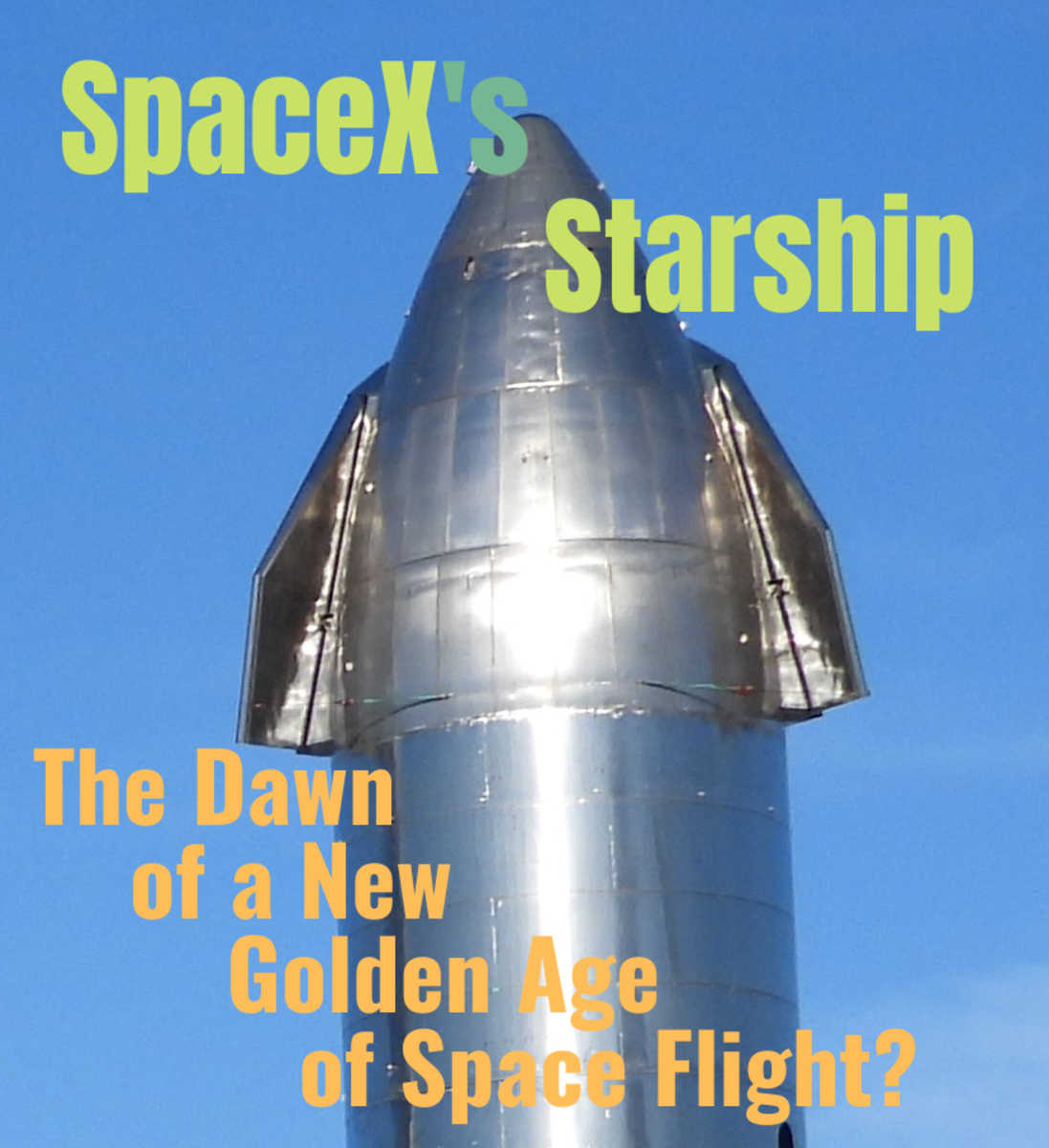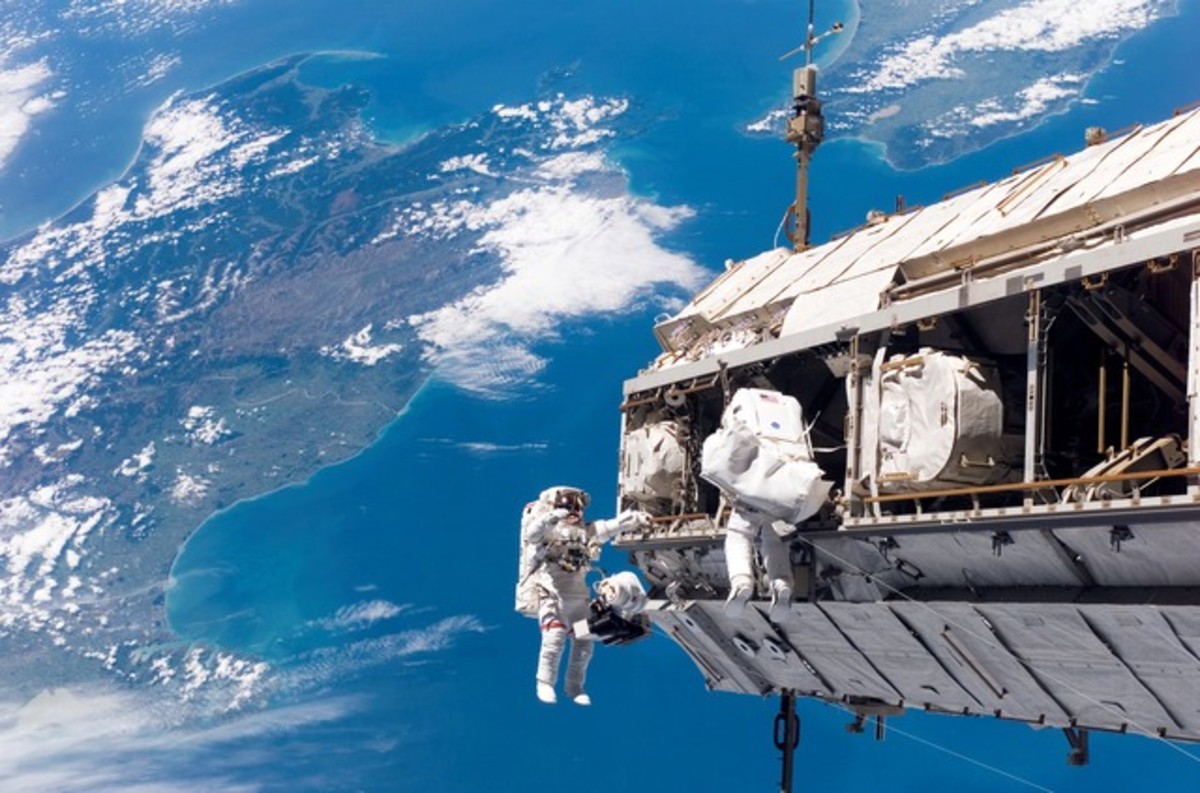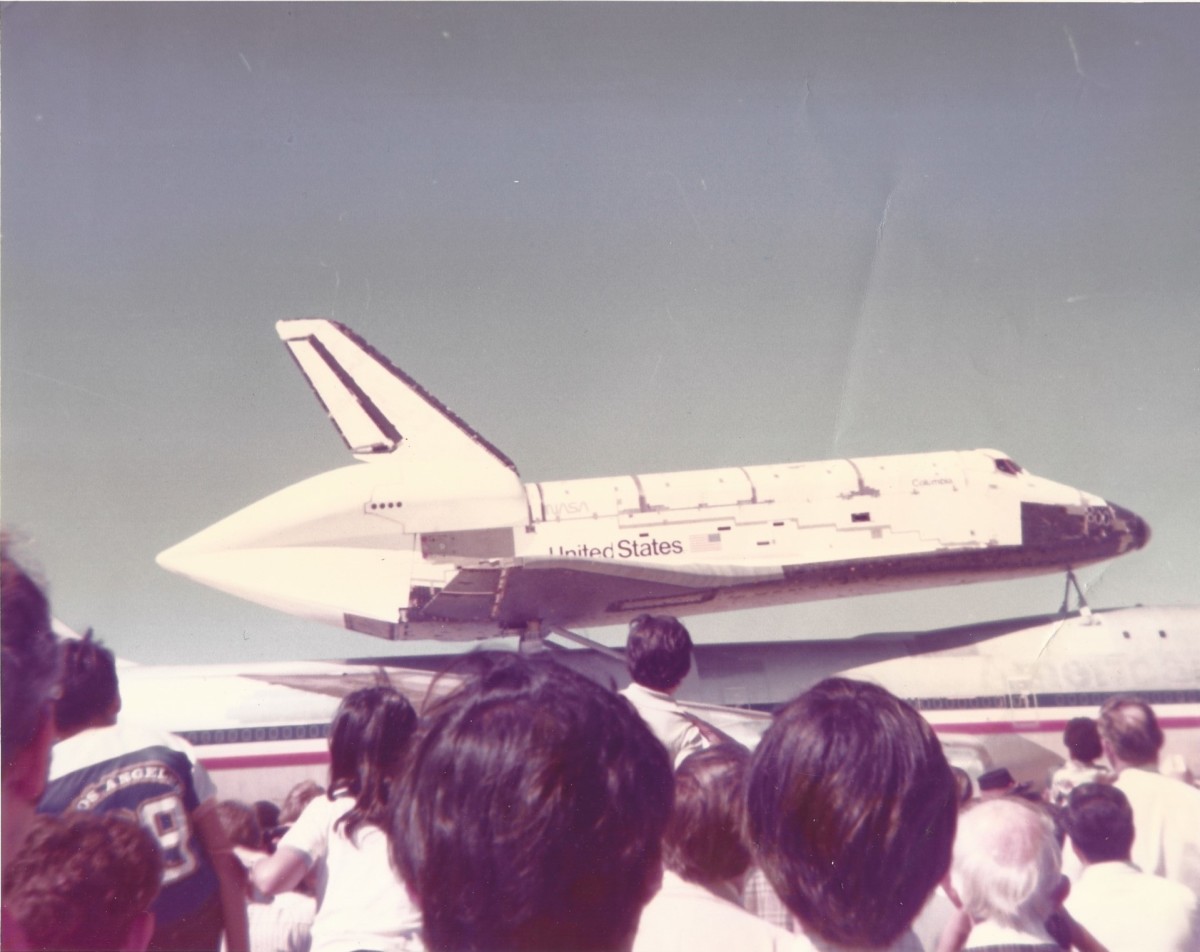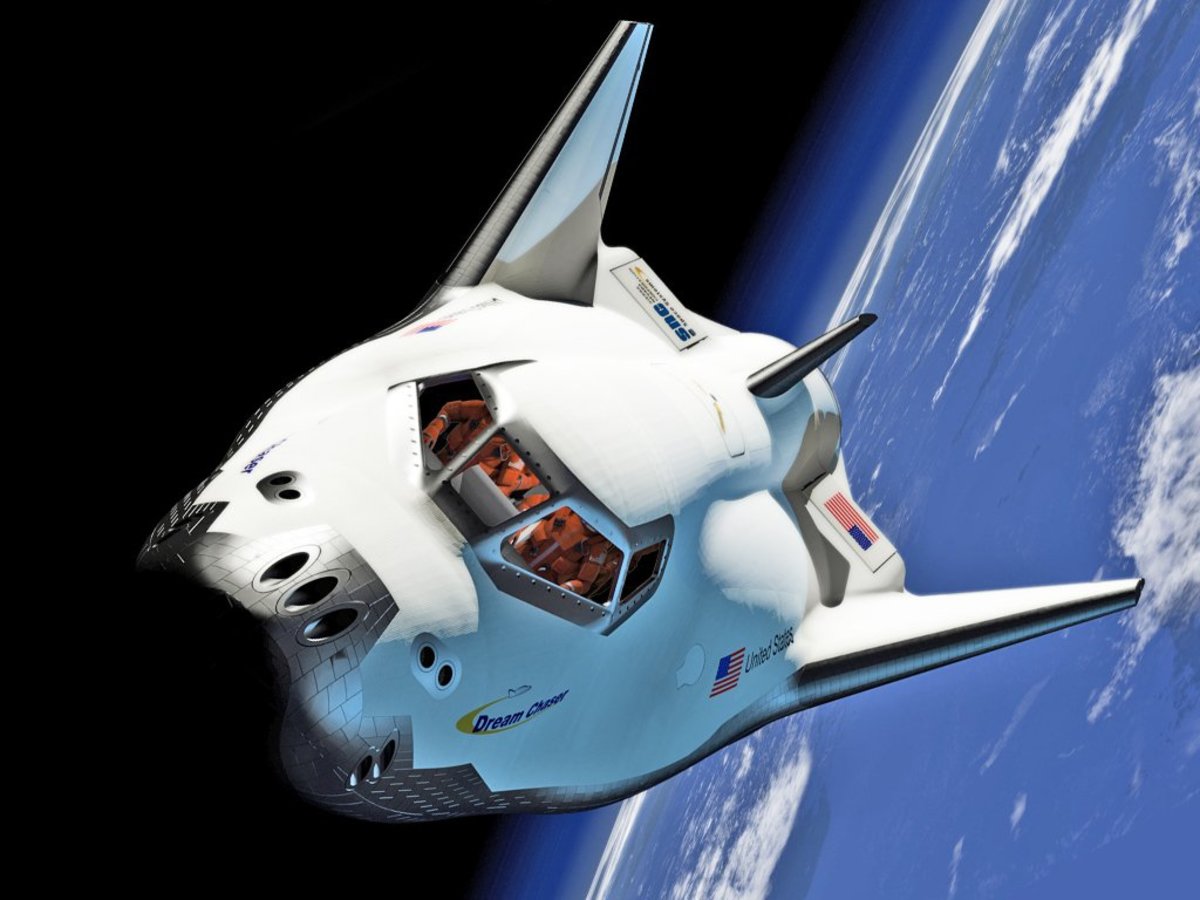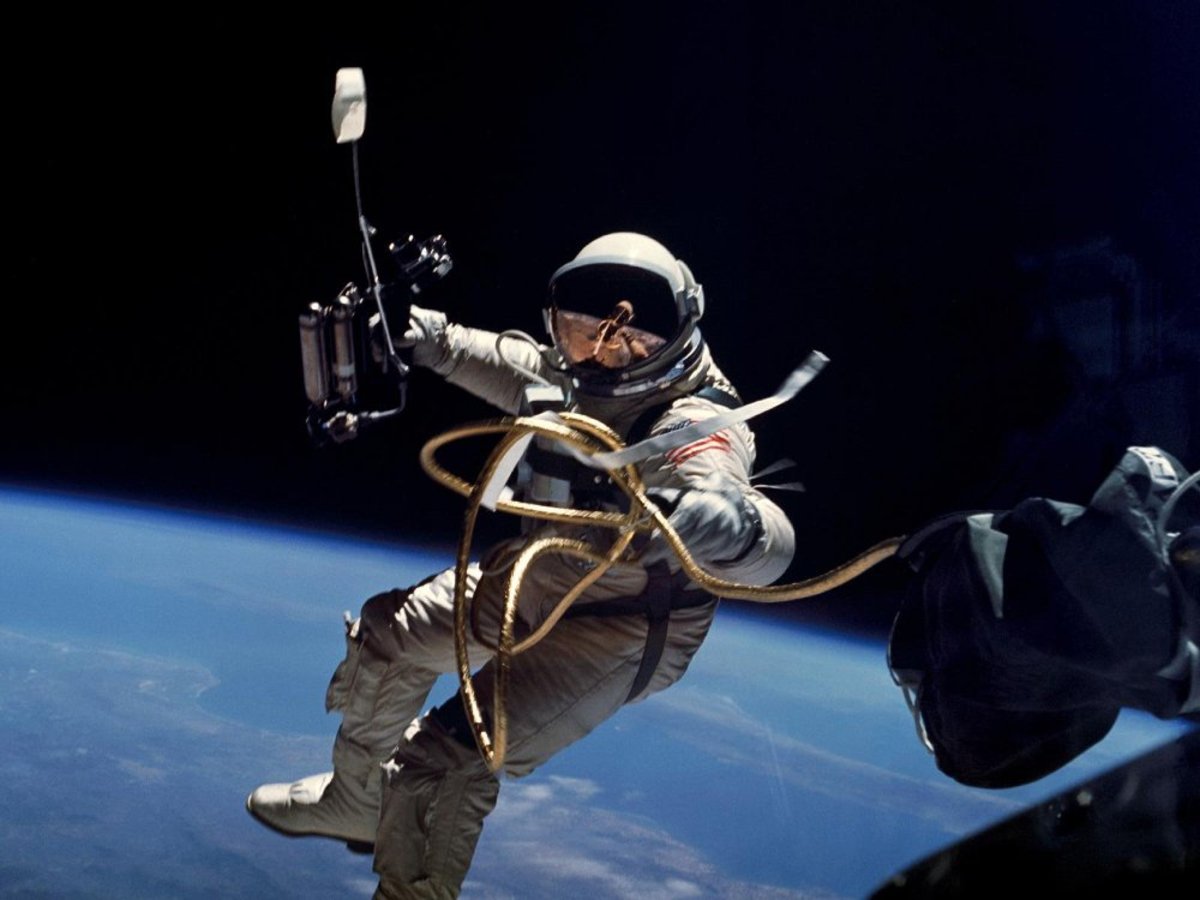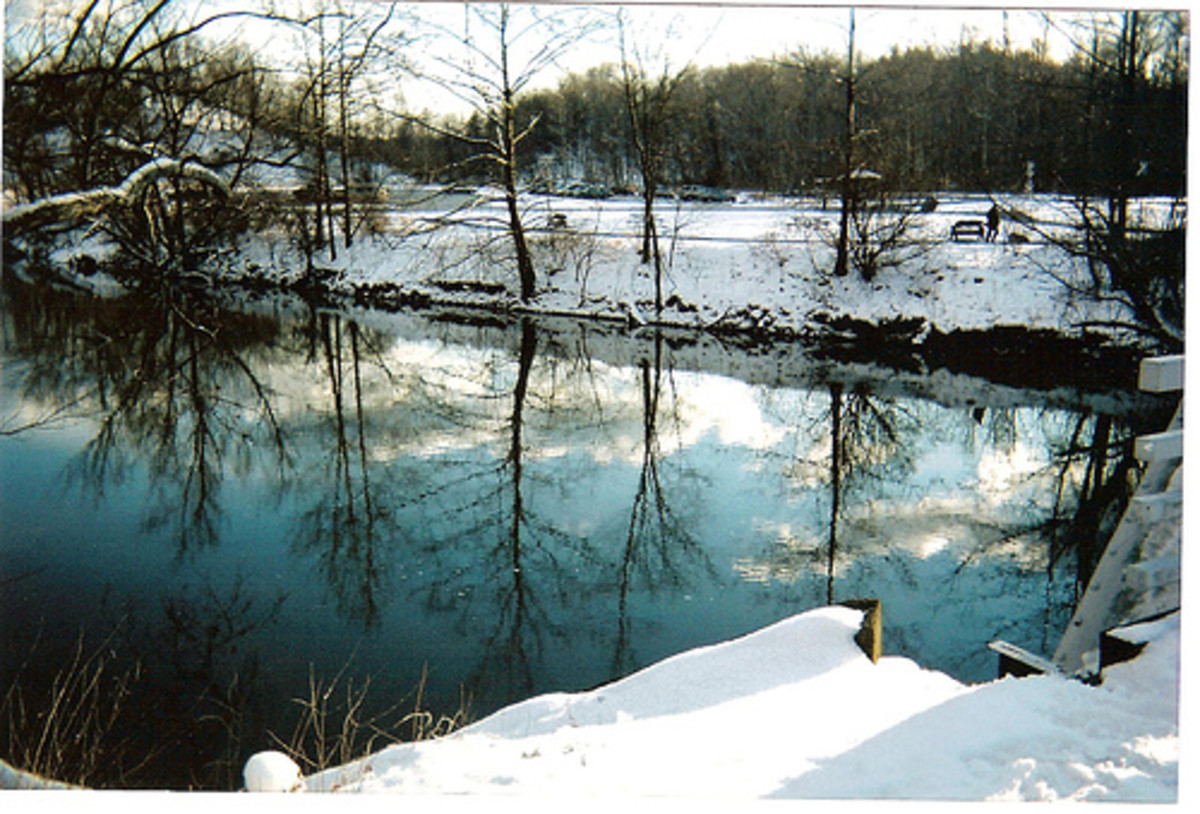Virgin Galactic and Their SpaceShipTwo and White Knight Rocket System
For as long as man can remember, he has dreamed of going to the stars. It is only through the past 60 years that the ability to do so has flourished and developed. But not just anyone can go into space. Only a select few can go after years of training and even then only a small number of those who are qualified actually go. Sometimes, a private citizen was able to go into space but only after paying an exorbitant amount of money. For the average Joe, it is impossible to gain access to such an opportunity. But with recent developments in the private sector, maybe our chance is just around the corner.
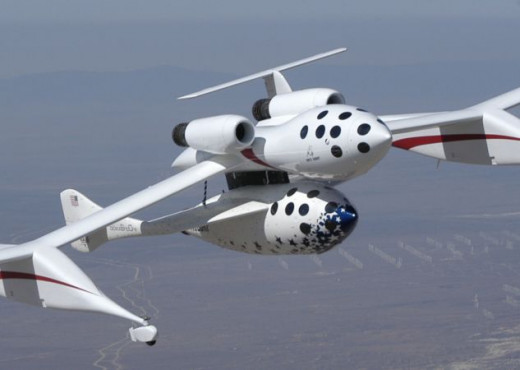
SpaceShipOne and Virgin Galactic
In the early millennium, a challenged was issued to the world by the X-Prize Foundation: get a spacecraft weighing a minimum of 595 pounds to a height of 10 kilometers twice in a two week period and you will receive $10 million. This was because Anousheh Ansari, a business woman, wanted to get to space. Known as the Ansari X-Prize, it was captured by SpaceShipOne (SS1) which was designed by Burt Rutan, built by Scaled Composites, and financed by Microsoft’s Paul Allen. But the path to get off the ground was challenging.
After getting the funding together, the craft that would carry SS1 to space was named White Knight, an experimental design that took off like an airplane but separated from SS1 at 46,000 ft.. The first flight for the plane was on August 1, 2002, and lessons were indeed learned. The spoilers on the plane were moving up and down and were designed to "help the ailerons provide roll control" but instead forced pilot Doug Shane to make an emergency landing. Four days later, the problem was identified, remedied, and another test flight happened with no problems. The test proved to the financial backers the project was feasible and Rutan was able to secure an additional $20 million in funding (Belfiore 81).
Many major departures from traditional rockets were incorporated into the design of SS1 and White Knight. The biggest difference was how it took off like a plane and landed like one but required two separate craft to reach space. SS1 made use of drag to help slow down for landing by rotating its wings by 65 degrees. This also ensured that the craft would not overheat and it was also a stabilizing factor. The fuel mentioned earlier is a liquid nitrous oxide/solid synthetic rubber mixture that provides 18,000 pounds of thrust at about 3 g's of force. The rocket can be turned off and on at will and just takes a day to replace. (Rutan 32, 34)
SS1 slowly came together and in April 2003 Scaled Composites invited the media to get up close tot he new craft. People noticed the tail number: N328KF. It represented the 328,000 feet the team needed to even hope of getting the prize. But time was running out, for insurance was a big component for how the X-prize was to be distributed. Facing an ever closer deadline, Rutan relied on his design without testing it, even in a wind tunnel. Therefore, the first test flight would be the first data on SS1 period (Belfiore 82-4).
That test flight occurred on August 7, 2003 and SS1 was flown by Mike Melvill, the senior pilot at Scaled Composites. He had been in similar circumstances with Rutan before and so wasn't worried at all, and neither was Rutan about Melvill. Brian Binnie piloted White Knight and got Melvill to 47,000 feet when SS1 was released solely for a glide test. From that height, SS1 fell back to Earth in a nice spiral pattern which controlled the approach and lowered the energy more effectively (84-5).
With the aerodynamics of the glide in check, it was time to settle the hybrid rocket. Scaled Composites would take care of the oxidizer tank and the rocket motor extremities but the remaining tasks were outsourced, such as the synthetic rubber rocket fuel, the ignition system, the oxidizer injector, and the fuel dump system for the oxide tank. To get the best priced system, Rutan had two different companies compete for the contract to those needs. SpaceDev of California and Environmental Aerospace Corporation of Florida built their projects and ultimately SpaceDev was found to be cheaper and so was chosen (88-9).
After an additional 6 glide tests and the test firing of the engines on land, it was time to install the engines on SS1 and give it a shot. On December 17, 2003 (100 years to the day after the Wright Brother's infamous flight), with Binnie piloting SS1 the craft was released and the engines hit, creating 3.5 Gs of force. As the flight continued those Gs reached up to 4.5. By using the trim control to stabilize SS1 and the rudder for roll control, Binnie piloted SS1 into a nearly vertical path as recommended by his Tier One Navigation Unit (TONU). After 15 seconds, SS1 becomes the fastest private craft ever launched at the time. Then the engines were hit off and the craft slowed as air friction and drag reduced the forces on SS1 to 2 Gs. That flight reached a max height of 67,800 feet before making its descent back to Earth. During that phase of the flight, the tail boons swiveled out and entered feather mode, increasing the drag and air friction to slow the craft down, until 33,000 feet was achieved at which point they were returned to normal configuration (89-90).
It was at this stage that Binnie can into a problem. The wings started acting differently than what the simulators indicated they should and his reentry speed was too big. After using the glide pattern, he did land but went off the runway. Everything seemed okay, but this wasn't good as the flight for the X-prize was looming ahead (91).
After checking the simulations, the next powered flight was done by Pete Sielold (the navigator behind TONU). This flight, the nitrous oxide tank was full and so a higher altitude was needed for launch. As an added bonus, the stall of the plane would be greater at faster speeds because of the weight, so one had to be even more careful. But sure enough as he descended, SS1 stalled several times, so to lower the weight Mission Control decided to do an engine burn. The problem was the engine was fired rather late in the descent to test for a supersonic feathered descent, so not much more intelligence was gathered. Melvill got to try the next test, and encountered a new glitch. The TONU system crashed, leaving Mike to pilot the craft solely on the horizon. He was able to get SS1 to 211,110 feet before descending and leaves the feathered mode at 55,000 feet. He lands without issue and the TONU glitch is resolved (92).
June 21, 2004 was a huge day for SS1: It was time for space. With Mike at the helm, SS1 was brought to 47,000 feet when it was released from White Knight by Binnie. With a tank full of the rubber fuel and nitrous oxide, the engine was flipped on and so was 3 Gs. SS1 suddenly jerks 90 degrees left and Mike compensates using the rudder pedal. The fuel switches from liquid to gas propellant without issue and after the motor goes off at 180,000 feet he reaches an apogee of 328,491 feet. Space! With a bag of M & ms and a camera, Mike enjoys becoming the first private astronaut ever. After landing back on Earth, he also realized SS1 was the only U.S. spacecraft in space for that year because of the Columbia tragedy (93-6).
The first flight for the X-prize occurred on September 29, 2004 and was piloted by Mike Melvill, who took SS1 to an altitude of 337,500 feet after detaching from White Knight. He did encounter some spin issues as he made his landing and countered them with the air bursters. It was determined the problem was pilot error and not a mechanical issue. On the second flight SS1 was piloted by Brian Binnie. SS1 fired its nitrous oxide and rubber-based fuel rockets after detaching from White Knight to achieve a height of 367,400 feet, which was 40,000 feet more than the X-Prize required. Ironically, a preflight spill of coffee on Brian by his mother-in-law added about 12 ounces to the total weight and cost the team an extra 200 feet of altitude. Both times SS1 landed at Mojave Airport 24 minutes after rocket ignition (Svital 52; Rutan 31, 34; Belfiore 98).
Shortly after, Richard Branson of Virgin Atlantic teamed up with Rutan and Allen to form Virgin Galactic. This company aims to be the stepping stone into space for people who want to go but can’t afford how much NASA charges. Originally, the goal was for a 2007 launch of the fleet of ships that were to follow with the ability of people to pay $190,000 per person, but FAA concerns and design failures have held back production (Svital 52).
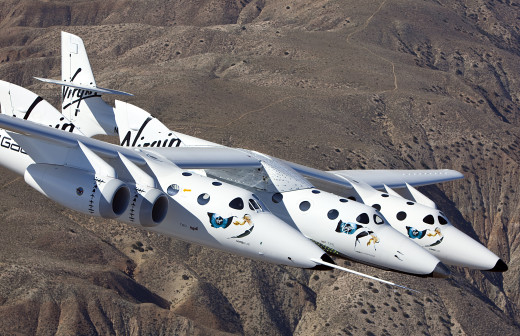
SpaceShipTwo and the Spaceport
The successor to SS1, SpaceShipTwo (named VSS Enterprise) launched with great success. It is the same concept as SS1 but is over twice as big, at 60 ft long. The same technology is used, with WhiteKnightTwo (named Eve) able to carry 35,000 lbs to an altitude of about 55,000 ft and then launching VSS Enterprise. Finally, when it wants to return to Earth, SS2 used the glide method to coast back to the surface. It is designed to carry space tourists and has both side windows as well as ceiling windows for a great view. If all goes as intended it will carry up to 6 passengers and up to 2 astronaut pilots ("Array", "Virgin Galactic").
Eve and Enterprise will be made of carbon composite materials, allowing for increased strength and decreased costs. For propulsion, Eve will make use of "four Pratt and Whitney PW308A engines" while Enterprise will utilize a special hybrid rocket. Eve will be a vastly different design from WK1 because it will have a central-docking area for Enterprise and a side fuselage on each side, allowing Enterprise to have more room to dock safely and to also increase turn-around time ("Virgin Galactic").
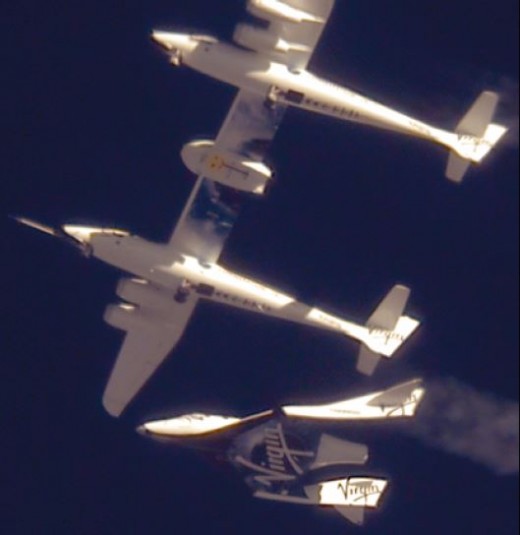
Now it needed to prove it could fly. On October 10, 2010 VSS Enterprise successfully detached from Eve at 45,000 feet and glided back down to Mojave Air and Spaceport. No complications arose and pilots Pete Siebold and Mike Alsbury reported no difficulties in maneuvering the craft. This test came after 40 flights by Eve, 4 with Enterprise attached to it, to prove that Eve could function within norms ("VSS Enterprise"). Shortly after, a rocketed flight by Enterprise also proved successful.
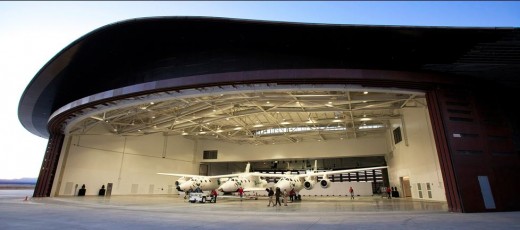
But where would one launch such a craft? In 2005, Virgin Galactic and the State of New Mexico agreed to build the Spaceport America. At $200 million, it was designed to be the launch and arrival point of spaceship flights for the company. At over 27 square miles, it certainly covers a lot of ground and provides all the framework the company needs ("Array"). It was finished on Oct. 18, 2011.
Disaster and an Uncertain Future
Halloween 2014 was a different kind of horror than the typical holiday entails. On its 55th flight and the first powered one in nine months, Enterprise was destroyed two minutes after separating from Eve over the Mojave Desert. One of the pilots did manage to eject from the craft but the other did not survive the incident. Initial reports saw people claiming to see Enterprise explode in the air. The blame was quickly placed on an experimental fuel-mix of thermoset plastic with nitrous oxide that had previously tested without any problems on Earth but had not been tested in flight before. Some even wondered if the rocket had undergone a hard start, or when an excess of fuel is in the chamber and the pressure buildup becomes too much (Hutchinson "One", Freeman, O'Neill).
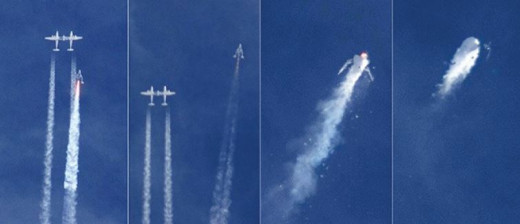
However, calmer heads (namely the National Transportation Safety Board or NTSB) were able to show that it was not the fuel that caused the disaster, for the engines and fuel systems were recovered intact and without the damage an explosion would have caused. As it turns out, the wings that normally allow the craft to use air drag to coast back to Earth were the culprit. Telemetry shows that for reasons unknown, the co-pilot who did not survive the crash released the safety lever on the drag wings, causing then to become free and deploy, thus ripping the spacecraft apart. Normally this premature release would not have been a problem but because Enterprise was not at full speed the wings were not held by aerodynamic forces and were able to cause havoc. It is important to note that the lever is normally released but only after Mach 1.4, for at this point the forces keep it down until a downarc in the trajectory occurs, allowing the pilot to abort if needed. Enterprise was only going about Mach 1 at the time of breakup (Klotz "SpaceShipTwo," Reyes).
The NTSB had a lot on their plate. Sure, they found out what caused the failure, but then they had to look into Virgin Galactic to see if a physiological or management issue was at play. It could have been pressure to perform to the fullest that got to the co-pilot, making him do something he normally wouldn't have (Hutchinson "NTSB"). Finally near the end of July in 2015 the NTSB released its findings. They concluded that the co-pilot who was killed in the crash made a fatal mistake that Scaled Composites did not consider humans to be capable of and therefore had not installed a failsafe to compensate. They had assumed that the co-pilot would follow the instructions of engaging the feathers at Mach 1.4, where aerodynamics would have prevented the cataclysm seen on October. Cockpit video shows the pilot unlocking the feathering system too early, despite protocol. Scaled Composites has promised to ensure this will not happen again (Geuss, Reyes).
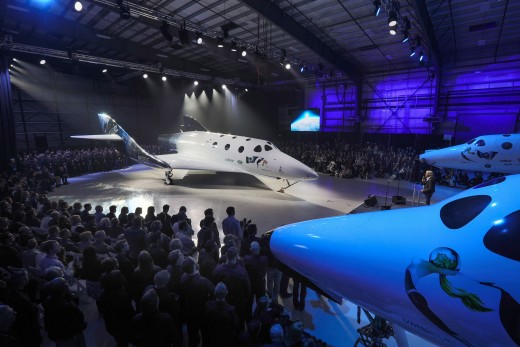
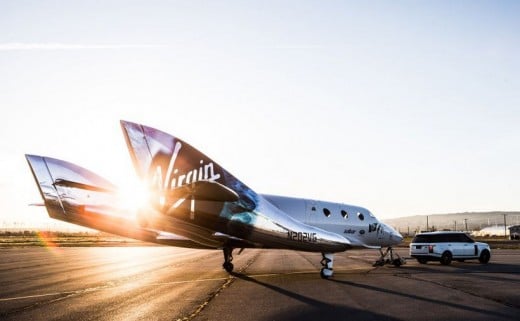
The Path Redeemed
The move to get the program back on track took a big step when in February of 2016 Virgin Galactic debuted their new SpaceShipTwo. Named VSS Unity, it was the first ship fully built by the company following a restructuring from the fallout of the accident. As it turns out, 75% of the craft had been finished when Enterprise was destroyed, possibly helping to ensure that the company did not fold as it strived for a quick turnaround. And not to worry, for Unity has many upgrades to its predecessor, some planed prior and some as a result of the tragedy, such as a computer release of the tail wing feature as opposed to a human manually disengaging it. Virgin Galactic doesn't want anymore failures to take away from their goals, and they are taking as many steps as is required to accomplish this (Klotz "New," Berger).
And on September 8, 2016, the 50th anniversary of Star Trek, VSS Unity had its first test flight. For four hours, it along with Eve went through simple maneuvers and collect data on handling and possible further improvements to be made (Nield).
Works Cited
"Array." Overview – Spaceport. N.p., n.d. Web. 12 May 2014.
Berger, Eric. "Virgin Galactic moves on from crash, debuts flashy new spaceship." arstechnica.com. Conte Nast., 19 Feb. 2016. Web. 08 Mar. 2016.
Belfiore, Michael. Rocketerers. New York: Smithsonian Books, 2007. Print. 81-5, 88-96.
Freeman, David and Macrina Cooper-White. "Virgin Galactic's SpaceShipTwo Crashes During Test Flight Over Mojave Desert." The Huffington Post. N.p., 31 Oct. 2014. Web. 02 Dec. 2014.
Geuss, Megan. "SpaceShipTwo crash: Aerospace company failed to consider human error, NTSB says." ars technica. Conte Nast., 28 Jul. 2015. Web. 17 Aug. 2015.
Hutchinson, Lee. "NTSB: SpaceShipTwo Broke Apart When 'Feathering' Activated Early." ars technica. Condé Nast., 03 Nov. 2014. Web. 02 Dec. 2014.
- - - . "One Confirmed Dead as Virgin Galactic SpaceShipTwo Destroyed in Test Flight." ars technica. Condé Nast., 31 Oct. 2014. Web. 02 Dec. 2014.
Klotz, Irene. "New Virgin Galactic SpaceShipTwo Makes Debut." Discoverynews.com. Discovery Communications, LLC., 19 Feb. 2016. Web. 08 Mar. 2016.
---. "SpaceShipTwo's Rocket Engine Did Not Cause Fatal Crash." Discoverynews.com. Discovery Communications, LLC., 03 Nov. 2014. Web. 02 Dec. 2014.
Nield, David. "Virgin Galactic Just Resumed Test Flights, 2 Years After Its Fatal Crash." 13 Sept. 2016. Web. 20 Oct. 2016.
O'Neill, Ian. "Virgin Galactic's SpaceShipTwo Destroyed During Test Flight." Discoverynews.com. Discovery Communications, LLC., 31 Oct. 2014. Web. 02 Dec. 2014.
Reyes, Tim. "NTSB discovers pilot error in SpaceShipTwo investigation." Astronomy.com. Kalmbach Publishing Co., 03 Nov. 2014. Web. 04 Aug. 2016.
Rutan, Burt. "Rocket for the Rest of Us." National Geographic April 2005: 31-2, 34. Print. 29 Sept. 2014.
Svital, Kathy A and Eric Levin. “SpaceShipOne Opens Private Rocket Frontier.” Discover Jan. 2005: 52. Print. 12 May 2014.
"Virgin Galactic Unveils SpaceShipTwo, the World's First Manned Commercial Spacecraft." Virgin Galactic. N.p., 07 Dec. 2009. Web. 25 Sept. 2014.
"VSS Enterprise Completes First Manned Glide Flight." Virgin Galactic. N.p., 10 Oct. 2010. Web. 26 Sept. 2014.
- What is the Kepler Space Telescope?
Known for the ability to find alien worlds, the Kepler Space Telescope has changed our way of thinking of the universe. But how was it built? - What Was the Project Orion Space Program?
Though many know of the Space Shuttle, few know of the Orion Space Program. This rocket that failed to get off the drawing board utilized a unique fuel source: nuclear bombs.
© 2014 Leonard Kelley


